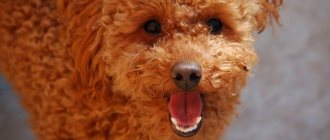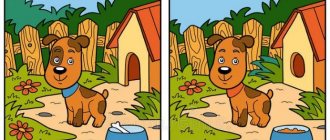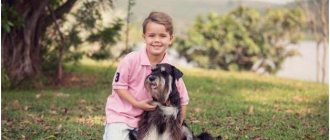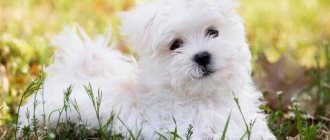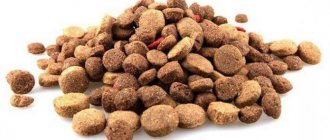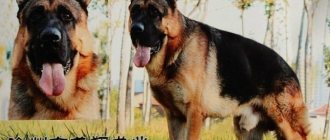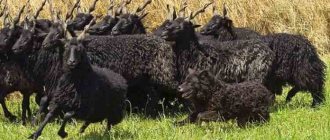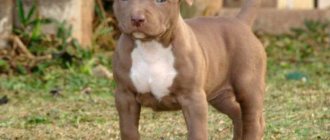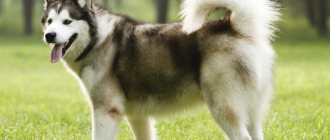4.4 / 5 ( 5 votes)
These are not just decorative miniature dogs created for soft beds and spa treatments. Dogs actually served on ships, in palace storerooms, and on farms. Brave Bolonkas caught rodents, protected their owners from robbers, and saved them from cold and melancholy. Now breeds from this group constantly appear at exhibitions, in show programs, and participate in circus and theater performances. Animals love attention and human care.
Bichon Frize
The breed appeared a long time ago, in the 13-14th century on the Canary Islands. The animals were not specially bred. The sailors found small white curly dogs in the tropical forests and decided to bring them to the mainland. During the voyage, the Bichons showed hunting qualities: they boldly hunted rats and mice in the holds, and protected provisions. Therefore, the sailors kept some of the individuals for themselves, and sold others to Europeans.
Canary Bichons found their way to Spain, Italy, England and France. Each country improved dogs in its own way. The Bichon Frize is a French breed that is loved not only by aristocrats, but also by street performers. Dogs can be found on circus posters or paintings from the 15th to 18th centuries.
Curly light coat is a natural necessity. This cover repels the sun's rays and does not accumulate heat. This was the inspiration for the name of the breed: frize from French - curly.
Despite the fact that dogs are considered decorative, they are much denser, larger and heavier than “sofa” pets. Bichons are larger than Chihuahuas or Toy terriers and can grow up to 30 cm and weigh more than 5 kg. In addition, springy curly hair (up to 10 cm, corkscrew curls) adds volume. The only acceptable color is white; red spots are typical only for puppies.
Active, positive, cheerful dog. An ideal family pet that values and loves all members of the household equally. Bichons are kind, flexible, and get along with children. They like games and sports.
Thanks to their mental abilities and physical fitness, Lapdogs can cope with any task. They show good results in agility, circus work, and freestyle. The main drawback of the breed is playfulness. Bichon Frizes love to chew and break everything. The cost of puppies is up to 50,000 rubles.
Bolognese (French lap dog)
It is strange that the breed is called the French lapdog, when its actual homeland is Italy, the city of Bologna, which is where the first name came from - Bolognese. Most likely, the dog's closest relatives are the Maltese and the Poodle. The animals came to Russia as a gift from Catherine the Second. The confusion in the names is explained by the similarity between Bolognese and Bichon Frize.
The main difference between the breeds is the texture of the coat. While the Bichon has corkscrew curls, the Bolognese has loose, wavy or curly hair.
Small dogs (up to 30 cm at the withers) with a cheerful character. These are true optimists with an easy, stylish gait and high self-esteem. These dogs never lose heart. The family is friendly, but they do not like strangers, although they never show aggression. The average cost of puppies is 30,000 rubles .
Nutrition
Professional breeders and experienced owners of lap dogs recommend that their pets’ diet Dry food is perfectly balanced in price/quality, contains all the necessary vitamins and mineral supplements, and is easy to select, ration and dosage.
If a dog refuses industrial food, it is fed natural products. Menu includes:
- lean meat, offal;
- bird;
- fish fillet;
- porridge;
- low-fat sour milk;
- assorted vegetables.
Forbidden:
- feed your pet from the table;
- confectionery;
- smoked meats;
- salt and spices.
Any miscalculations in the organization of nutrition have a bad effect on the health of the pet.
Havanese Bichon
And Bichons came to Cuba in the 17th century. Then the system of export and import was being established, ships from different countries arrived at the port. On one of them came Bolonki and Poodles, who stayed on the island with the local rich. Time passed, the dogs grew older.
Already in the 18th century, new dogs were found - a mixture of Poodles, Bichons and small Cuban mongrels. The result was Havanese puppies - a symbol of freedom and the island of Cuba, a national treasure of the people. The breed was recognized only in 1996.
It was believed that such a pet would bring peace and prosperity to the home; the tradition remains to this day.
A distinctive feature of the Havanese is their color. The standard coat color of the Bolonka is white, but due to the blood of the Cuban “natives”, the Havanese received black and brown spots on the face, paws and body. Dogs grow up to 25 cm, they have a rectangular body with pronounced withers, a sloping croup and a wide loin. The muzzle is short, with a rounded skull and drooping ears. The tail is thrown over the back.
Animals are kind, open and non-aggressive. They are used to living with a person and serving him. Therefore, Havanese are calm, peaceful, and treat children, strangers, and even other pets well. But owners often pamper small pets, which is why puppies become domineering manipulators.
Lapses have a sharp mind and good learning abilities. They easily remember commands, love to perform, and are suitable for exhibitions, show programs and circus acts. The average cost of a Havanese Bichon puppy is 35,000 rubles.
Care and maintenance
Living in a confined space will make absolutely any dog unhappy. A purebred dog should periodically leave its territory. This is necessary to gain new emotions and impressions.
The Russian lapdog is a classic “indoor” version of a pet. She does not require frequent walks, like, for example, a Chihuahua, and tolerates separation from household members, but not for long.
When leaving the apartment and leaving the dog alone, do not worry about the safety of household items. The lapdog will not spoil your shoes or tear up furniture with pillows. Usually, when left alone in the apartment, she lies down at the front door, waiting for the people dear to her to return. Rest assured, the arrival of a stranger in the house will definitely not be a reason for her to be warmly received.
Of course, if one of the family members is in the apartment at that moment, the animal will not attack the person who comes. This is how a dog’s intellectual potential is revealed. A smart dog always relies on the owner, that is, the arrival of a stranger for him is an event that a person must control.
To make the life of a Russian lap dog comfortable, you should purchase a lot of colorful soft toys for it. Brightly colored rubber animals, such as ducklings, work best. They are easy to find at any pet store.
Now about leaving. The Russian lap dog is unpretentious in this regard. But, she has a long, silky coat that should be brushed daily. We recommend using a metal comb. Some owners cut their dogs' hair in the summer to keep them cool. It makes sense. In this case, there is no need for daily combing.
Important ! If your Russian lap dog takes part in any competition or is shown at an exhibition, its coat requires additional care. We recommend using conditioner for decorative dogs along with shampoo.
Girls' lap dogs often have their hair braided, and I attach various hairpins to the hair. This way they look more attractive, but in this case you will have to comb their fur more often. Additional care points:
- Washing. Remove stains from your dog's eyes with a damp hand.
- Removing dental plaque. Since lap dogs have very small teeth, cleaning them is not easy. But, this must be done at least once a month.
- Grinding claws. Representatives of decorative dog breeds need to file or trim their claws, as they cannot cope with this task on their own.
- Removing sulfur. Every day, dust and dirt accumulate in the ears of animals, which should be removed in a timely manner. Otherwise, severe inflammation occurs.
Dwarf Maltese
The dog, which appeared as a subtype of the American Standard Maltese, is not recognized, is not allowed to show, but is popular. These pets are very small (weigh up to 2.5 kg) and cute. The “baby face” look with large eyes and a short, upturned muzzle is popular.
Such changes in appearance are a defect of the breed; puppies with abnormal skull structure should be discarded. But enterprising breeders considered this a successful marketing ploy. Animals with similar defects (short muzzle, underweight, small size) often get sick and injured.
In general, doggies are no different from their “big” brothers: white straight hair, black eyes, perky disposition, affection. They also make good companions and family pets. The average cost of puppies is 25,000 rubles.
Coton de Tulear
The second name of the breed is Madagascar Bichon. The Bolonki Islands arrived from France in the 17th century. There is a legend that after a shipwreck near the port of Tulear, several dogs survived and bravely swam across the rest of the strait and ended up on the island, where they mixed with aboriginal mongrels. This is how the unyielding, brave, fearless Bichons turned out - Coton do Tulear (the first part of the name is translated as “cotton” from French).
The Africans found the dogs, tamed them, washed them and sent them to the sea - on ships to serve as rat catchers. This is how the Tulears, called “kings of Africa,” would have sailed if the pampered Europeans had not noticed them and taken them to their palaces.
Like all Bolonki, Cotons are small (up to 28 cm at the withers), stocky, dense, but graceful and graceful, with long ears, a high tail and a royal posture. Their distinctive feature is long gray or ashy spots among the curls of flowing, wavy white coat. Due to their short, thick limbs, Tulears have to jump with four legs rather than two.
Animals will follow their master into fire and water. They are ideal companions with good physical fitness, hardy, courageous and cheerful. Dogs know how to adapt to their owner: they are ready to entertain children, relax with an elderly person, go for a run in the morning or lie on the couch all day.
The breed is hardened by hot climates and work, so Cotons still exhibit survival instincts to this day. They can strangle a rodent or bark at a stranger. It is important for them to protect the owner and his property.
Dogs are valued for their intelligence, willingness to train and learn. But if training is not started on time, puppies become fearful, withdrawn and uncommunicative. The average cost is 35,000 rubles.
Character traits
The lapdog is a unique dog, capable of being in a great mood around the clock.
A sea of energy, inexhaustible curiosity, adoration of the owner and household members, constant readiness to play and have fun - the explosive temperament of the lapdog cannot tolerate loneliness and inaction. But the cute white creature also has a “dark side”: the lapdog’s extreme jealousy can seriously ruin the owner’s life. If on neutral territory a lap dog sees its four-legged “colleagues” as an excellent company for games, then on its own it will try to ruin their life as much as possible. An owner who strokes another pet is a real tragedy for a jealous lap dog. There is nothing for other animals to do in the house.
Lapdogs also have a negative attitude towards strangers coming into the house. If it concerns a pizza delivery person, a signature collector or a postman, it’s not so scary, but the reaction will be the same for relatives and friends. The frantic barking of a dog will warn the owner about the approach of unwanted guests, and they themselves will bark in full force. If the lap dog felt that the visit had taken the owner’s attention away from it, the standard dirty tricks of a small dog are possible: chewed clothes or an unscented puddle in the shoes.
Leaving representatives of the breed alone for more than an hour is strictly contraindicated. A sad, unhappy dog will very quickly realize that it has definitely been abandoned, will become upset and will begin to actively take out its stressful state on the furnishings of the apartment. Wires, decorative items and furniture, things will suddenly become chewed, piles and puddles will form on the floor by themselves, but the lapdog will greet the stunned owner with genuine joy.
Children love playful and cheerful lap dogs. The dogs respond to them in full reciprocity - until the moment when the contact becomes too close. Run and play - yes. Scratching is also welcome, but a tight hug is no longer the right thing: the lapdog will try to get out of sight as quickly as possible.
Let's supplement the description with frequent ringing barks, which bring true pleasure to the neighbors, and we will get an ideal companion dog, from the point of view of medieval breeders.
Maltese
Perhaps these are the first Bolonki that existed in the world. Similar dogs were described by Charles Darwin in his works. Images of white little dogs were found on burial slabs from the 8th century BC. And these Bolonki were sailors. The name arose due to an error in the texts. In fact, the animals originated on the island of Meletus near Croatia.
There is a version that the name came from the Latin language. “Malat” is translated as “harbour”, that is, the Maltese is a resident of the harbor.
The animals were noticed by rich people and kings, so Maltese did not have to serve in the navy for long. Mary Stuart herself and Queen Victoria maintained small kennels of lapdogs. The breed has gone through a long selection process to improve the quality of its coat and reduce its size.
In the 1930s, breed clubs grew, a standard was issued, and the breed gained recognition. It is assigned to the Italian canine organization. The lap dogs must be white; beige shades are rarely allowed. The coat without undercoat is straight, soft, silky and shiny.
There are currently two breed standards:
- American (characteristic short muzzle, reduced weight to 3 kg);
- Worldwide (animal weighs 3.5-4 kg, stretched body format, muzzle of medium length).
This is a pampered and spoiled breed, very touchy and selfish, often the dogs are jealous and impatient. Despite this, the animals are loyal and affectionate, non-aggressive, kind and sweet. With proper upbringing, the Maltese will not bark for no reason, play around and spoil things. The average cost of puppies is 15,000-25,000 rubles.
Lesser Lion Dog (Levchen, Bichon Lyon)
The most unusual breed among the Bolonki, which may not even have relatives among the Bichons, but belongs to their section in the decorative group. Cynologists believe that Levhens appeared in the 2nd century from the mixing of Epagnoles and Great Danes. The demand for animals fell and grew, by 1960 the breed was listed in the Guinness Book of Records as the rarest, and in 1961 the International Film Festival recognized the Small Lion Dogs.
The exterior of the breed is still being improved: French cynologists find individuals similar to true pristine Levchens and breed them, paying special attention to the format of the head.
Unlike other lap dogs, lion dogs have a square skull and a square body. They are much larger than the Maltese or Frize, growing up to 32 cm. Their coat is long, straight, and fluffy. It can be black, brown, gray, piebald, red, with white stripes. Dogs are cut so that they resemble lions: bare torso and hind limbs, feathering on the head, neck, chest and tip of the tail.
Indoor decorative dog with a bright exterior and a gentle character. This is a real family pet: unobtrusive, calm, loving. Levchens learn quickly, are not lazy and active. The average cost is 15,000 rubles.
Russian Tsvetnaya lap dog
A mixture of breeds, the first experiment in the USSR in breeding an ornamental pet . In the mid-20th century in Russia, fashionistas complained about their fate and envied French women with snow-white lapdogs on their knees. Therefore, the kennel club decided to collect all the miniature dogs known to Russian people at that time: a pair of light and dark lap dogs and a Lhaso apso. The result is a cute brown puppy with white streaks.
The work was completed in the late 50s, but the breed club appeared only in 1999, so the Russian Colored has not yet received recognition, but breeders are actively defending their position and hope for the imminent publication of the standard in the FCI
Russian colored lapdogs are chocolate, brown, black, gray with straight or curly hair. The dogs are small (up to 24 cm), weighing no more than 4 kg. In all other respects, they are typical Bichons with a long body, drooping ears, a short muzzle, and a bushy tail. The latest changes to the exterior standard were made in 2010.
Moderately active dogs that prefer comfort and family coziness. They can even live without walking, most importantly, in a friendly, loving family with children. Russian coloreds are flexible, kind and affectionate, and are never aggressive. The only disadvantage of the breed is its excessive attachment to humans; the pet literally follows its owner everywhere. The cost of the breed is 15,000-25,000 rubles.
Despite the fact that lapdogs are decorative, they need to be trained. Small dogs often manipulate their owners, damage furniture, and behave badly. In order not to turn your pet into a tyrant or a capricious child, you need to train him correctly from childhood.
History of the breed
The first of all types of lapdogs to appear was the Maltese lapdog; the first documents describing dogs similar to the lapdog were found on the island of Melita at the beginning of our era. At that time, such pets were already considered very valuable; only wealthy people could breed them.
And on the island of Melita there was a large trading city-port, which was visited by traders from many developed countries at that time. They exchanged their goods also for dogs of this breed. This is how the Maltese ended up in China, but at that time these pets were not formed into a separate breed.
Since the journey to this country by sea and then by land was not short, we can note such qualities of lap dogs as endurance and the ability to endure long journeys. In China, they appreciated the best qualities of Maltese dogs and started breeding them. And visiting traders exchanged the brought lap dogs for Chinese silk.
It was representatives of this breed that the French presented to Mary Stuart as a gift, and this is how lap dogs appeared in Scotland. These dogs were brought to Great Britain by Captain Lukiy, who was going to present them as a gift to Queen Victoria. However, the Maltese lost its attractive appearance during the trip. Therefore, the captain gave these dogs to his brother, who at that time was breeding the mastiff dog breed. The new dogs interested him very much, and this dog breeder began breeding them. These Maltese dogs were the founders of a new breed in Great Britain.
During the First World War, people had no time for keeping dogs in general, and Maltese dogs in particular. Therefore, at this time lap dogs completely disappeared from the European continent and Great Britain. And only years later, several copies of these dogs were again brought to England. And in the 30s, a club for this breed was created in this country, the breed standard was described, and specialists from this club monitored the breeding of the Maltese to prevent deviations from the standard.
During the Second World War, this breed again almost disappeared completely. However, there were enthusiasts who managed to preserve several representatives of this breed during wartime. This is how the Maltese dogs were saved from extinction for the second time.
But only twenty years later it was possible to restore the number of these dogs to double the level. More than 50 breeders of this breed from all over the world took part in the international exhibition of Maltese dogs held during this period.
This breed was brought to America at the end of the 19th century, and by the beginning of the 30s of the last century, the number of Maltese individuals in the USA was close to 30. It was the offspring of these purebred lap dogs that were brought to Great Britain after the Second World War.
And in Russia, the first representatives of this breed were abandoned by the retreating troops of Napoleon, these dogs quickly won the love of their new owners. Subsequently, these dogs were crossed with some other breeds, as a result a variety of lapdogs was bred - Russian.
